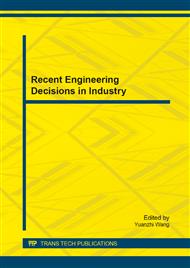[1]
Edward P Becker: Trends in tribological materials and engine technology. TribolInt2004; 37: 569-575.
Google Scholar
[2]
Patir N and Cheng HS.: An average flow model for determining effects of three-dimensional roughness on partial hydrodynamic lubrication. Trans. of ASME 1978; 100: 12-17.
DOI: 10.1115/1.3453103
Google Scholar
[3]
Patir N and Cheng HS.: Application of average flow model to lubrication between rough sliding surfaces. Trans. of ASME1979; 101: 220-230.
DOI: 10.1115/1.3453329
Google Scholar
[4]
Rohde SM.: A mixed friction model for dynamically loaded contact with application to piston ring lubrication in surface roughness effects in hydrodynamic and mixed lubrication. Proceedings of the ASME Winter Annual Meeting, ASME Publication 1980; 19-50.
Google Scholar
[5]
Mufti RA, Priest M and Chittenden RJ.: Experimental and theoretical study of instantaneous piston assembly friction in a gasoline engine. In: ASME/STLE 2004 International Joint Tribology Conference, Parts A and B Long Beach, California, USA, 24-27 October 2004, paper no. TRIB2004-64199, pp.907-921.
DOI: 10.1115/trib2004-64199
Google Scholar
[6]
Akhmedov AI and Mamedova DA.: 4-Methyl-1-pentene olegomers as thickening agents. Chemistry and Technology of Fuels and Oils 2003; 39: 339-342.
DOI: 10.1023/b:cafo.0000011909.30531.dd
Google Scholar
[7]
Salah A Mohamad, Nehal S Ahmed, Saeed M Hassanein, et al.: Investigation of polyacrylatescopolymers as lube oil viscosity index improvers. Elsevier Petroleum Science and Engineering 2012; 100: 173-177.
DOI: 10.1016/j.petrol.2012.06.015
Google Scholar
[8]
Greenwood JA and Tripp JH.: The contact of two nominally flat rough surfaces. ProcInstMechEngrs 1970; 185: 48-71.
Google Scholar
[9]
Yeau-RenJeng: Theoretical analysis of piston-ring lubricationpart I: Fully flooded lubrication", Tribol Trans1992; 35: 696-706.
Google Scholar
[10]
Priest M, Dowson D, and Taylor CM.: Theoretical modelling of cavitation in piston ring lubrication. ProcInstMechEngrs 2000; 214: 435-447.
Google Scholar
[11]
Bernard G Kinker, in: Lubricant Additives; chemistry and applications, edited by Leslie R. Rudnick. 1st ed. New York: Marcel DekkerInc., 2003, pp.329-353.
Google Scholar


